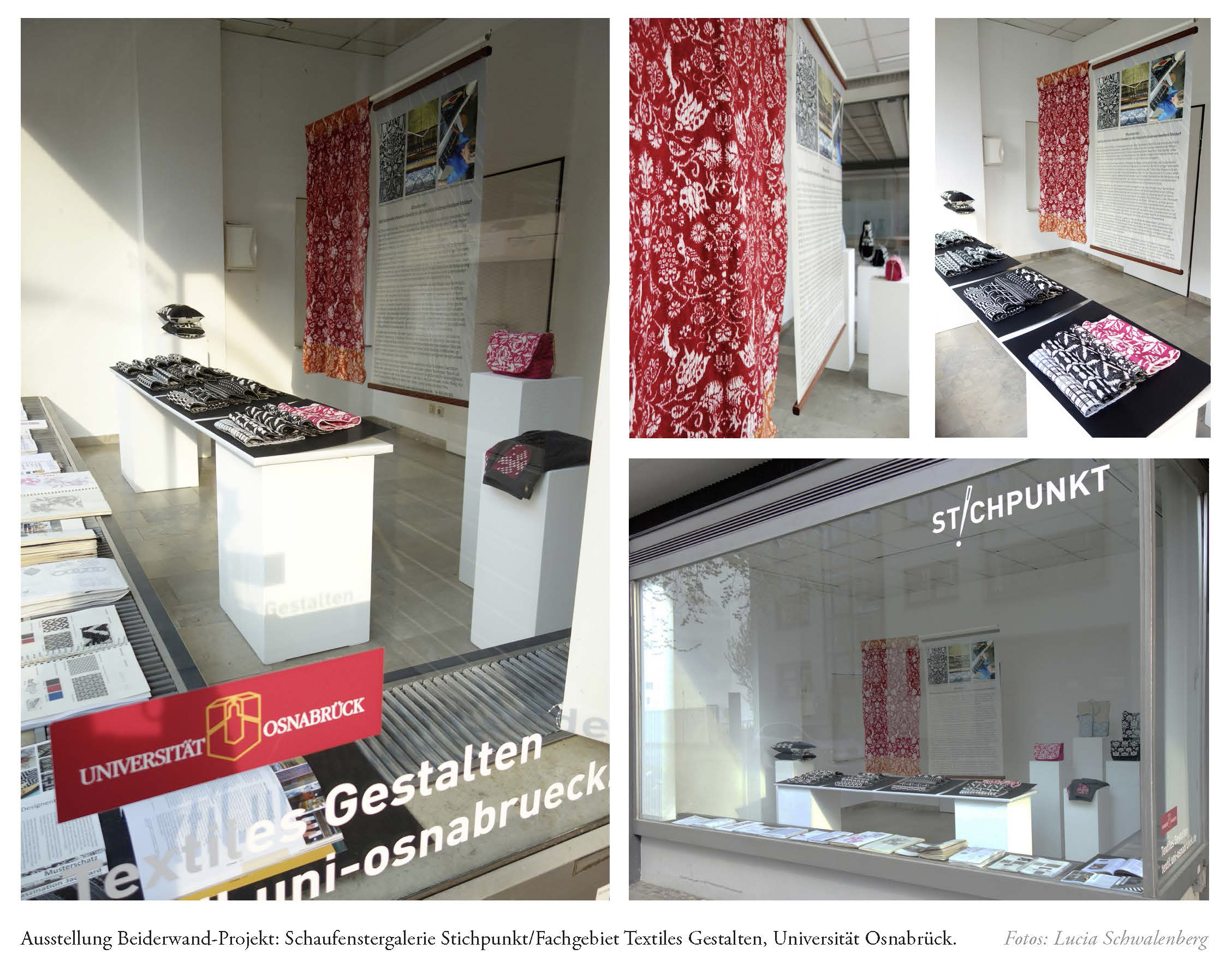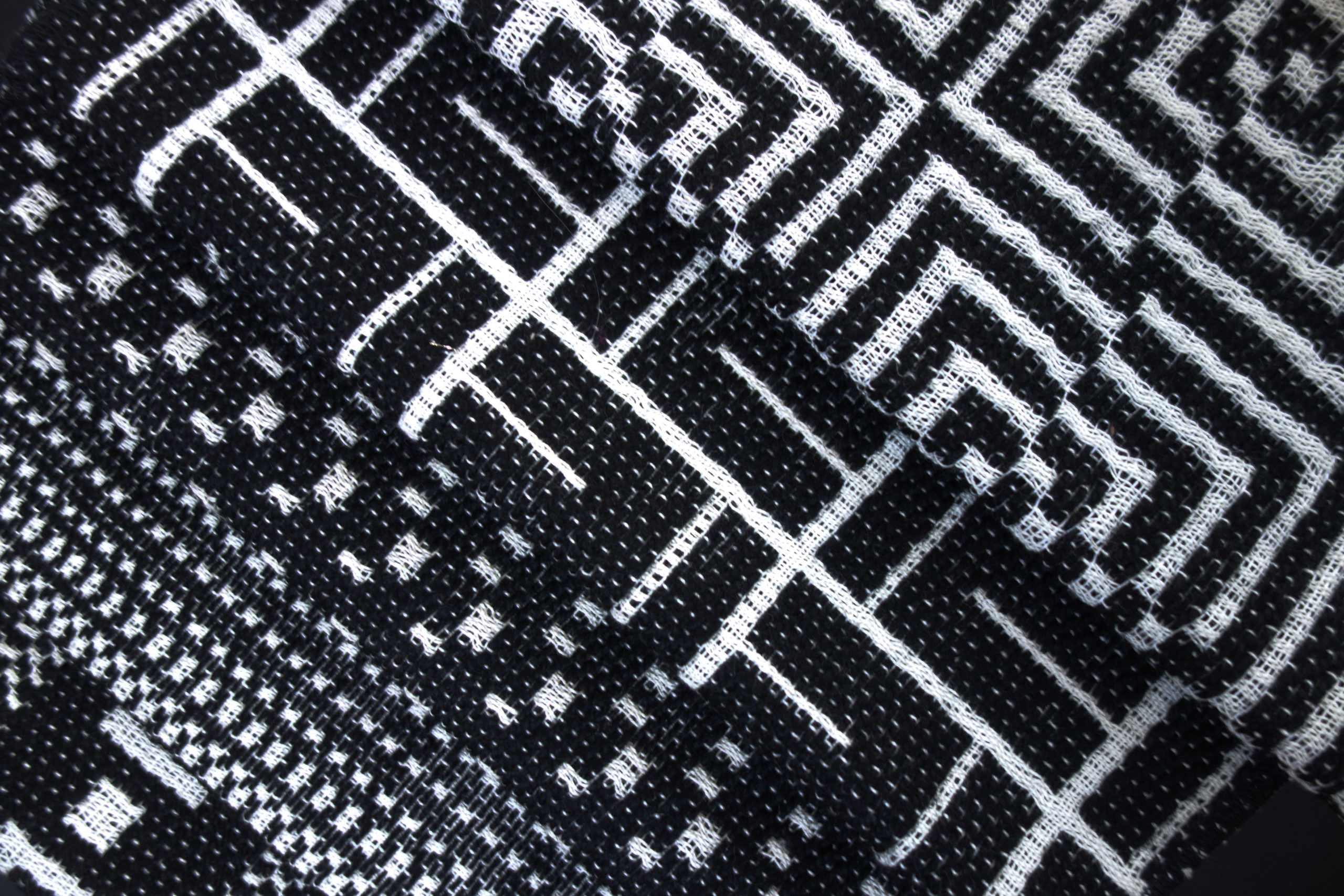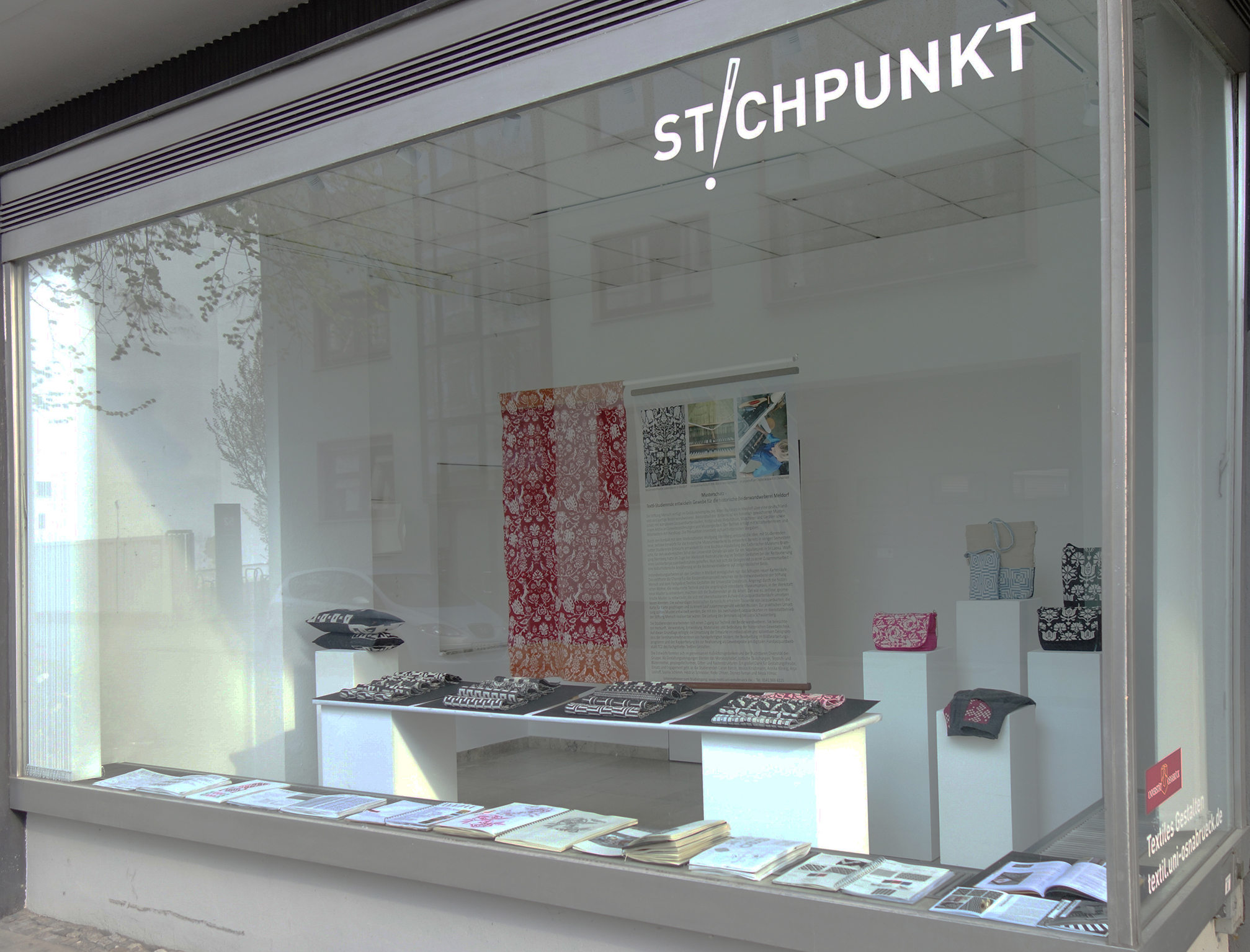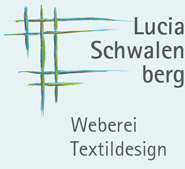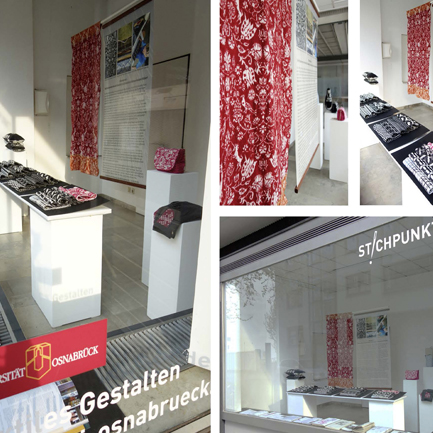Textile students develop fabric for the historic Beiderwand weaving mill Meldorf
Inspired by the historical motifs of the Beiderwand weaving mill in Meldorf, textile students from the University of Osnabrück developed new timeless fabric designs. Lucia Schwalenberg led the collaborative project with Stiftung Mensch. The results are on display in an exhibition at the "Stichpunkt" gallery.
The Mensch Foundation has a weaving mill in the Old Pastorate in Meldorf that is unique in Germany. Part of the weaving mill is a historically grown sample treasure with complex Jacquard card runs, historical looms, machines and devices as well as an archive of fabric drawings and samples. The operation is carried out by the Stiftung Mensch with employees with handicaps. Production is based on historical patterns.
Through contact with the workshop manager, Wolfgang Sternberg, the idea arose to create new, timeless designs for the historic museum weaving mill with students. Students had already developed designs in previous semesters, for example for a Bauhaus exhibition of the Tuchmacher Museum Bramsche, for the academic scarf of the University of Osnabrück or for a social project in Sri Lanka. In the course of the workshop restructuring in textile design, Wolfgang Sternberg had helped to restore the department's own punched card jacquard loom. Now the opportunity presented itself for a further collaboration - a cultural-historical approach to Beiderwand weaving on a contemporary basis.
Repair work on the equipment recently made it possible to beat new card runs in Meldorf. This opened the possibility for the cooperation project between the Beiderwand weaving workshop of the Mensch Foundation and the Department of Textile Design at the University of Osnabrück. Inspired by the historical motifs, the refurbished technique and the originally intended museum practice of developing new patterns in the workshop, the students set to work. The goal was to develop timeless, geometric patterns that could be translated into Jacquard card runs at a manageable cost. The elaborate historical card runs require thousands of jacquard cards to be beaten card by card and sewn together to form a run. For practical implementation, patterns should be developed that could be feasible with one to two hundred Jacquard cards in the workshop operations of the Stiftung Mensch.
The students developed an approach to the technique of Beiderwand weaving. They illuminated the origin, use, development, materials and significance of the historical weaving technique. On this basis, the implementation of the designs took place in the individual and collective design process of the seminar participants from handmade sketches, editing in the image editing program and rapporting to the realization as a fabric sample on the digital hand jacquard loom TC2 of the department.
The students Canan Barcin, Jessica Kirschmann, Annika Klinkig, Anja Leshoff, Rieke Ohlsen, Sophia Schlimm, Heidrun Schneider, Zeynep Yaman and Beyza Yilmaz were involved in the project. The seminar was led by the textile designer and research assistant of the department, Lucia Schwalenberg.
The results of the cooperation project will be shown in an exhibition in the gallery Stichpunkt des Textilen Gestaltens from May to June 2021 in Seminarstraße 33 in Osnabrück.
The "Musterschatz" project is an example of the implementation of design content in the course of study in the Corona pandemic: The challenge was to enable the practical implementation of the designs and to achieve the goals of the seminar despite strict access restrictions in the workshop rooms of Textile Design. Thanks to the great dedication and commitment of the students and teachers involved and prudent adherence to all hygiene measures, the realization of a total of almost 40 design drafts on the department's digital jacquard was successful. A selection of these can be seen in the exhibition.
The Department of Textile Design offers the bachelor's degree program in Education and the master's degree programs in Elementary School Teaching and Secondary School Teaching. The aim of the program is to train future teachers who will be able to engage in a broad scientific and creative examination of the diversity of textile culture. The Beiderwand project in cooperation with Stiftung Mensch combined a design task with questions of inclusion and cultural sustainability. At the same time, the seminar bridged the gap between analog and digital technologies in the design and production of textiles.
See report of the European Textile Network ETN
More information: University of Osnabrück/Department of Textile Design, Dipl. Journ./Dipl. Des. Lucia Schwalenberg: 0541-969-4219 / 05103-706424, lucia.schwalenberg@uni-osnabrueck.de
Photos/Text: Lucia Schwalenberg
